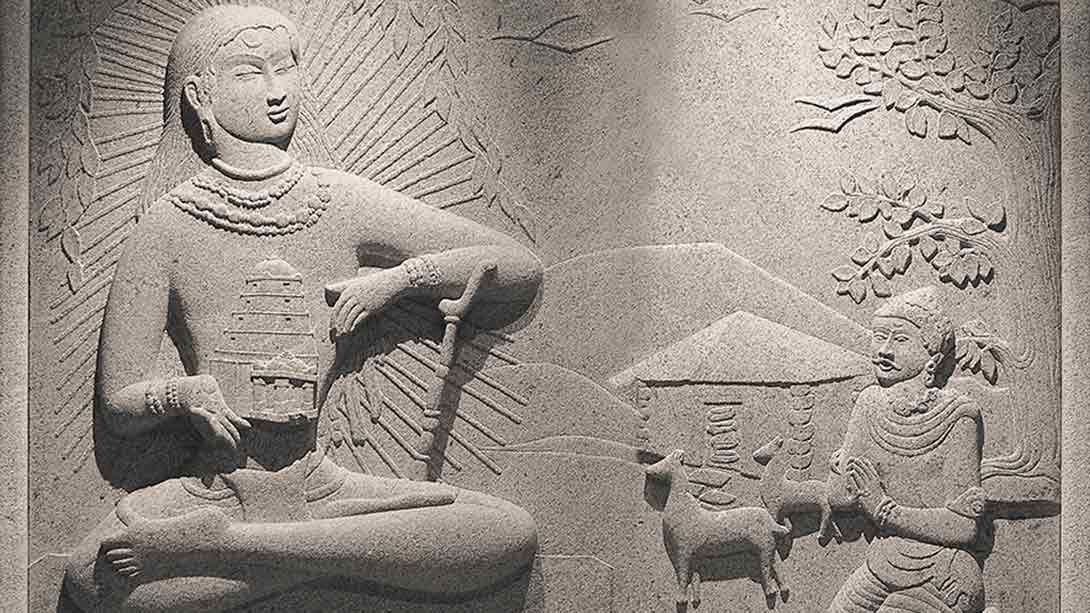The Inauguration of a Grand Shiva Temple
Sadhguru tells the story of Sage Poosalar and his inner temple, which drew the attention of Shiva himself.

Sadhguru tells the story of Sage Poosalar and his inner temple. He explains that Indian culture dared to see devotion as a device which could lead one toward liberation.
Sadhguru: Sage Poosalar was steeped in poverty, but determined to build a magnificent temple for his beloved Shiva. Every day he built this temple, brick by brick, entirely within himself. This inner exercise took him years.
The king of that land was also planning to inaugurate a big Shiva temple that he had commissioned. The night before the grand opening, Shiva appeared in the king’s dream and said, “I will not be able to come to your temple’s inauguration because Poosalar has built another temple in the same town. I need to go there. He is also opening it tomorrow.”
The king woke up with a fright, because after he has strived to build this temple for so many years, after so much money and effort, Shiva says he has to go to some other temple built by Poosalar in the same town. “Who is this Poosalar and which is this temple that I do not know about?” he wondered. He set out in search of Poosalar and finally found him in a dilapidated hut in the poorest district in town. “Where is your temple?” demanded the king. “The only temple I have,” replied Poosalar, “is in my heart.”
Subscribe
This well-known legend of southern India reminds us of a profound truth: if devotion overflows, divinity will follow and serve you. Humanity and divinity are not mutually exclusive. And hence the poet Basavanna’s memorable line that “the moving” temples are those “that ever shall stay.”
Indian Culture – Become One with Divinity
The distinctive hallmark of Indian culture is that we do not aspire to worship God. Instead we seek to embody the sacred ourselves. We do not seek to adore the divine. We aspire to instead become one with divinity. This is the only spiritual culture that is not God-oriented – an invaluable contribution to a world ravaged by wildly conflicting definitions of God.
Someone once told me, “I believe there is no God.” I replied, “Really? I don’t believe even that." This culture offers you the license to believe in the god of your choice, or not to believe at all. And if you do not find a god to your taste, it allows you the freedom to create one. That is how we ended up with 33 million gods at last count! To see God in a tree, rock or elephant is not considered absurd because every speck of creation is seen as a portal to the divine.
These gods were not mere imaginary toys. Instead we evolved a science of consecration, an entire science of god-making. Our deities are referred to as yantras – literally, machines to enhance life in all its manifestations. Devotees are sometimes disconcerted when I speak of the divine as a tool. But this is the audacious insight of this tradition: it dares to see not merely devotion as a technology but even god as a device!
And so, God becomes a stepping stone to your ultimate liberation. How you reach your liberation, whether with or without God, is entirely up to you. But your destination is always mukti or freedom – which ultimately means freedom from all concepts and beliefs.
Thousands of years ago, the world’s first yogi, Adiyogi, turned his attention on seven thirsty aspirants and proclaimed a radical truth: that the spiritual process is a science and the supreme goal is liberation. That historic day is celebrated to this day as Guru Purnima. The vibrant plurality of paths in India today owe their origins to the incredibly composite science of yoga that he propounded in which every dimension of the human being – body, mind, emotion and energy – is seen as a doorway to the divine.
This is the only spiritual culture based on a bedrock of science, not faith. For all problems of human wellbeing, in is the only way out.
Editor’s Note: The “Power to Create” meditations for Peace, Love, Health and Success (also known as “Chit Shakti”) enable each one of us to become our own alchemist, by empowering us to transform long cherished desires into reality. Try them out!
This article was originally published in Speaking Tree.


